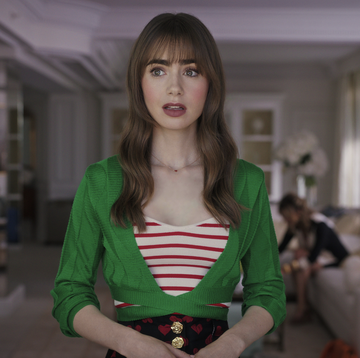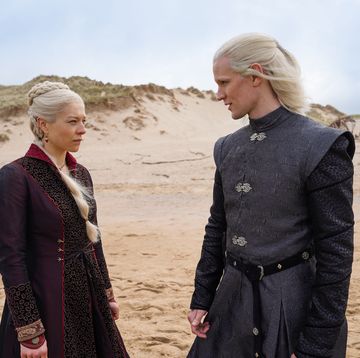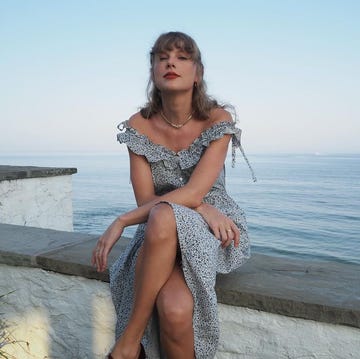Gun fire. A fireball at an airport. Helicopters under fire. Missiles flying overhead. Homes reduced to rubble. These are just some of the haunting scenes being shared across the internet today, showing just snippets of what is being experienced in real life, following months of failed diplomatic attempts to resolve the Ukraine-Russia crisis.
Many of us in the UK are struggling to comprehend how the conflict has escalated so drastically over the last week, but also how to sort out fact from fiction, true accounts from social media misinformation and where we might turn for a trustworthy first-hand perspective.
For some, including countless Russians, the country’s invasion of Ukraine has come out of left field. For others in-tune with the socio-political climate between the two countries, however, a large-scale military attack on Ukrainian military infrastructure and convoys entering the country from all directions, has seemed a devastating inevitability. ‘Our worst fears have now come true and all our warnings have proved tragically accurate,’ Prime Minister Boris Johnson said in an address to the nation on Thursday.
In November 2021, satellite imagery began showing a build-up of Russian troops on the border with Ukraine, and a month later world leaders like US President Joe Biden warned Russia of economic sanctions in the instance of an invasion. Weeks later, tensions mounted as NATO refused Russia’s demands to cease all military activity in Eastern Europe and Ukraine, with Biden warning that he was ‘convinced’ Putin had made the decision to invade Ukraine, describing it as a ‘war of choice’.
In the last week, explosions have echoed across Ukraine in the capital of Kyiv, the Donetsk region and the port city of Odesa. Russian military convoys have been seen entering Ukraine through its eastern, southern and northern borders, while the numbers of civilian deaths are now growing into their hundreds, according to the BBC.
In addition to countless news bulletins that now punctuate the day, a deluge of videos and photos have been shared on social media that show thousands of Ukrainians fleeing their homes, traveling on foot with suitcases stuffed with belongings near the southern and western borders, joining lines of car traffic as far as the eye can see, and boarding trains to find refuge.
While some footage shows the real, catastrophic result of the conflict, many social media users are unknowingly sharing misinformation – for example edited videos, out-of-context photos, and misleading tweets – resulting in confusion among those of us wanting to determine what's really going on.
‘You have a huge surge of demand, low supply of credible information, and a lot of sketchy information that fills the void,’ Bret Schafer, who heads the information manipulation team at the Alliance for Securing Democracy in the US, recently told the Associated Press.
In times of political crisis, it can be frightening to feel disconnected from the truth and difficult to seek out credible sources of information.
As a result, we’ve written a list of the best sources to follow for diverse, in-depth and thought-proving perspectives of the crisis as it unfolds:
1) Salwan Georges
Georges is a staff photojournalist at The Washington Post currently working on the ground in Kharkiv, Ukraine. In recent days he has shared photos of Ukrainians trying to find shelter from the Russian invasion. His photos include those of women and children sheltering in subway stations, families attempting to cross borders, and those in the Donbas region attempting to repair homes following shelling and artillery fire. Stay up-to-date with his reporting on his Instagram account here.
2) Oksana Parafeniuk
Parafeniuk is an independent photographer based in Kyiv and has previously worked for the New York Times and NBC News. On her social media account she has been sharing photos of individuals in Kyiv, including those attending defence training sessions.
3) Siobhán O’Grady
Siobhán O’Grady is The Washington Post's Cairo bureau chief, covering North Africa and Yemen, but she is currently based in Kyiv. In recent days she has been reporting on the conflict. ‘It just felt sort of surreal or unbelievable that it would actually happen,’ she said of the invasion on social media on February 24. You can read her latest report on those attempting to escape Kyiv on the Post’s website here.
4) Loveday Morris
Morris is the Berlin bureau chief for The Washington Post and is working from the ground in Poland, at present, reporting on Ukrainians walking miles from Ukraine to enter Poland. ‘People are just getting out of their cars and walking,’ she said in a video shared on social media earlier this week. Follow her reporting here.
5) Whitney Leaming
The videojournalist is sharing videos on her Instagram Stories from the Ukrainian capital of Kharkiv, and has filmed Ukranian tanks in the city, as well as the sound of explosions. Follower her account of the invasion here.
6) Serhii Korovainyi
Korovainyi is a documentary maker and portrait photographer who is sharing photos of displaced Ukrainians on his social media accounts. ‘Staying overnight in the subway shelter - this in new realty for Ukrainians,’ he captioned a series of photos of those who have fled their homes. Following Korovainyi's reporting here.
7) Olga Tokariuk
As freelance reporter who works in Kyiv, Tokariuk is Tweeting and retweeting posts about the crisis, including sharing photos of displaced Ukrainians. ‘Ukrainians are not pawns in a geopolitical game. We are real people, [sic]’ she tweeted her followers on Friday. Follow Tokariuk’s work here.
8) Sarah Rainsford
The BBC correspondent is reporting from the Ukrainian city of Kramatorsk and sharing her experiences of talking to Ukrainians about fleeing the country and photographing Ukranians queuing to give blood for troops. Follow her work via Twitter here.
9) Olga Rudenko
Rudenko is the chief editor of Kyiv Independent and has been sharing other’s photos on social media of the ongoing destruction being caused in Kyiv. On February 24 she shared a video of herself reporting live outside a university in Kyiv, which has been ‘liked’ over 22,000 times at the time of publication. ‘Most of us are on the ground in #Kyiv working to provide you with the latest news. It’s extremely stressful. No one knows where it is safe to be, or whether there will be more strikes and where, and Russian troops are moving from the north, [sic]’ she tweeted. Follow Rudenko’s reporting on Twitter here.
10) Julia Ioffe
The Russian-American journalist – formerly of The Atlantic and The New Yorker – is the founding partner and Washington correspondent of Puck. In recent days she has been tweeting about conversations she's had with friends in Russia, sharing up-to-date news about Russia's economy, and protests in Russia. Follow Ioffe's reporting on Puck here.
11) Meg Conley
Conley is a US reporter writing commentary about the Ukraine-Russia conflict and is commissioning writers for her newsletter MegConley.com, including one by journalist Olga Boichak about war, survival and family, which you can read here.
Here is a list of organisations you can donate to and support during the Ukraine-Russia crisis:
- Come Back Alive and Army SOS - a Kiev-based charity that fundraises for Ukraine’s military
- The Ukrainian Red Cross – an organisation offering humanitarian aid to help refugees and provide doctors in Ukraine
- Razom for Ukraine - a charity providing a emergency response to volunteers and uses donations for essential goods
- United Help Ukraine – an organisation that's providing humanitarian aid to civilians
- Revived Soldiers of Ukraine – a charity offering humanitarian and medical aid to soldiers and their families
- Save the Children – a charity raising money to provide essential humanitarian aid to affected children and families.

Katie O'Malley is the Site Director on ELLE UK. On a daily basis you’ll find Katie managing all digital workflow, editing site, video and newsletter content, liaising with commercial and sales teams on new partnerships and deals (eg Nike, Tiffany & Co., Cartier etc), implementing new digital strategies and compiling in-depth data traffic, SEO and ecomm reports. In addition to appearing on the radio and on TV, as well as interviewing everyone from Oprah Winfrey to Rishi Sunak PM, Katie enjoys writing about lifestyle, culture, wellness, fitness, fashion, and more.















